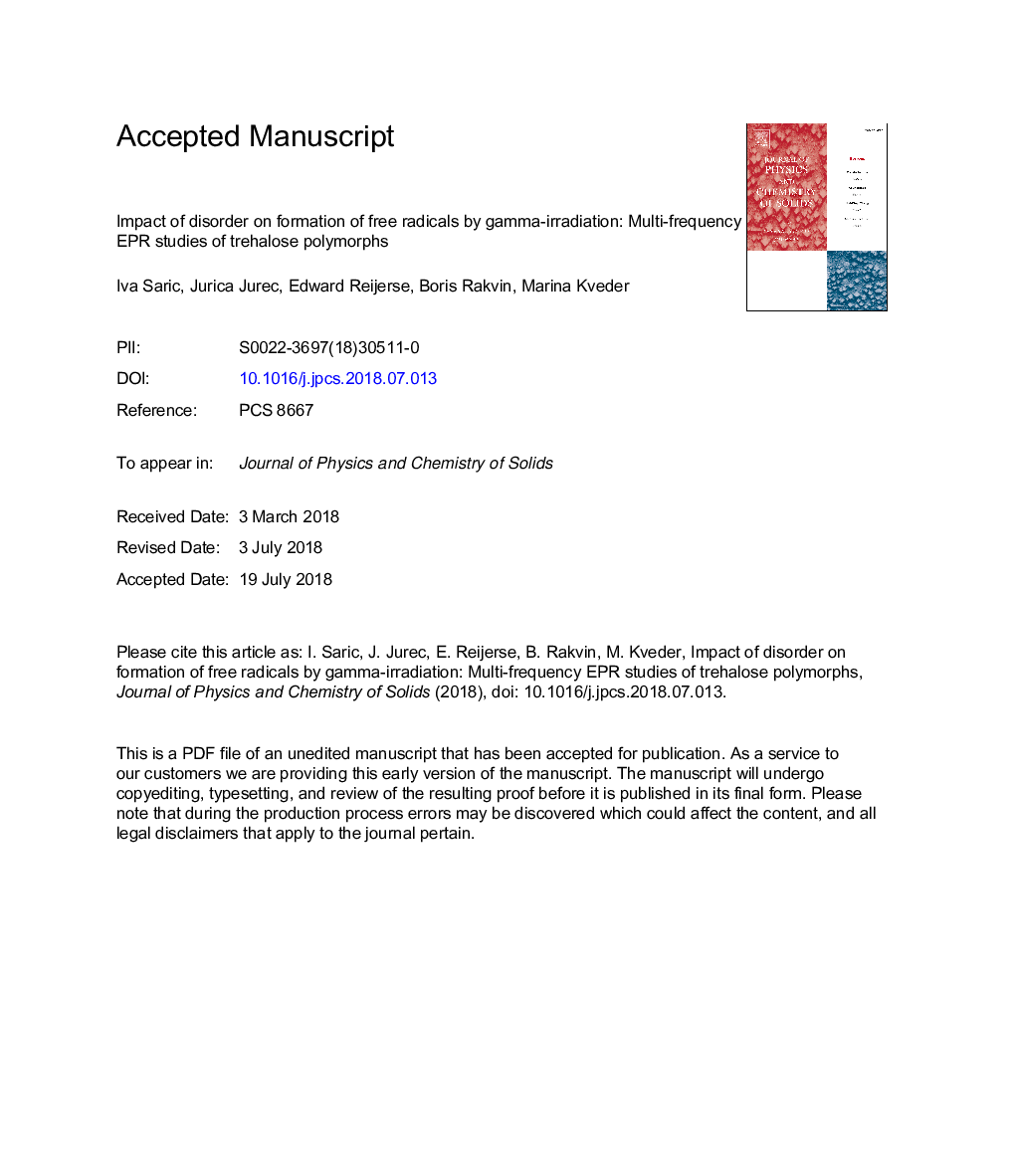| Article ID | Journal | Published Year | Pages | File Type |
|---|---|---|---|---|
| 7919804 | Journal of Physics and Chemistry of Solids | 2018 | 36 Pages |
Abstract
Electron paramagnetic resonance (EPR) studies of the radiation-induced radicals in two anhydrous trehalose polymorphs, beta-crystalline (TREc) and glassy (TREg), were conducted with the aim to resolve whether different types of free radicals are induced in a differently disordered environment. A multifrequency approach (9.5â¯GHz, 94â¯GHz, and 244â¯GHz) was applied to improve the g-tensor resolution of the complex EPR spectra. In addition, the thermal stability of the EPR spectra and the respective decay kinetics were analyzed in a series of thermal annealing studies in the temperature interval from 333â¯K to 363â¯K. It was found that in the crystalline matrix the transformation process of the induced radicals is more complex than in the glassy host matrix. Qualitative decomposition of the experimental spectra, assuming four contributing species, reproduced characteristic EPR spectral features in both matrices. These were interpreted as carbon-centered radicals while the possibility of the formation of alkoxy radicals due to the abstraction of a hydrogen atom could be ruled out. Only in one case, the tentative assignment of the EPR spectral components revealed the formation of the same radical species in both TREc and TREg. Furthermore, by thermal annealing TREg lost one of the radical species, whereas in TREc all 4 radical species pertained irrespective of the treatment. The results presented here, therefore, provide experimental evidence that the extent of disorder present in the material strongly affects the type and stability of radicals induced by ionizing radiation.
Keywords
Related Topics
Physical Sciences and Engineering
Materials Science
Electronic, Optical and Magnetic Materials
Authors
Iva Saric, Jurica Jurec, Edward Reijerse, Boris Rakvin, Marina Kveder,
